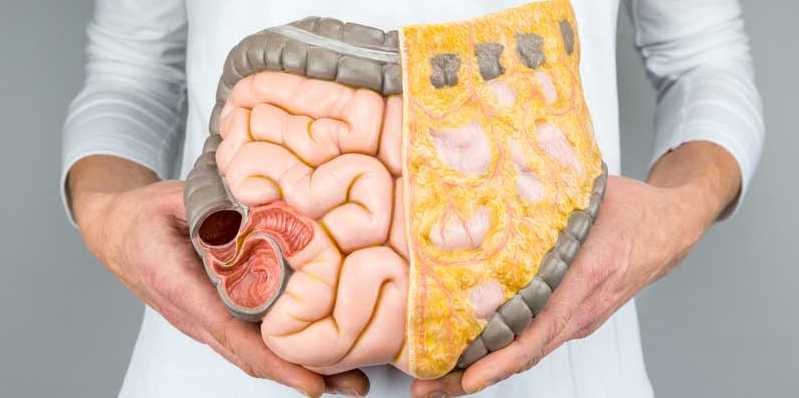Everyone has fat. Body fat is necessary to cushion and support your organs, build cells, and store energy, but too much can be dangerous for your well-being. While the conversation of weight usually targets visible fat, the topic goes deeper than love handles. There’s another hidden type of fat that can seriously harm your health and performance: visceral fat. Here’s everything you need to know about visceral fat, plus how to lose visceral fat.
What is visceral fat?

It’s important to understand the differences between visceral and subcutaneous fat. The fat you can pinch on your waist, arms, legs or anywhere else is all subcutaneous fat, stored just beneath the skin. Visceral fat is a different beast: the deep, internal fat packed around your abdominal organs — sometimes also referred to as abdominal fat. Healthy levels of visceral fat help insulate and protect your organs, and play a role in your endocrine and immune function.[ In excess amounts however, visceral fat can spell serious trouble for your performance and your health.
Keep reading to find out what causes visceral fat and how to finally lose it.
What causes visceral fat?
A carbohydrate-heavy diet, inflammation, and chronic stress can all lead to excess visceral fat. While a poor diet provides the building blocks for obesity, stress can actually amplify the rate by activating neurotransmitter NPY and the hormone cortisol. These signal your body’s sympathetic “fight-or-flight” response, which triggers the storage of more visceral fat.[
Genetics and hormones both help influence how your body stores fat, including the ratio of subcutaneous to visceral fat your body packs on. Studies have shown that cortisol (your stress hormone) and insulin tend to increase the accumulation of visceral fat, while healthy levels of growth hormone and sex hormones may help prevent it
Why is visceral fat bad for you?

While a larger waist circumference generally means more visceral fat, thinner people can also hide dangerous levels of visceral fat depending on their body composition. Studies have shown that excess visceral fat contributes to insulin resistance even regardless of visible obesity, leading to a host of complications including type 2 diabetes, hypertension, and cardiovascular disease.[
On top of messing with insulin, too much visceral fat also inhibits the hormone adiponectin, or the “fat hormone.” Studies show that adiponectin levels decrease with visceral fat, but don’t correlate with subcutaneous fat. Meaning, adiponectin functions as a fat regulator, and too little can cause your body to pack on more fat than it needs. Both high visceral fat and low adiponectin levels are useful indicators for increased risk of cardiovascular disease, such as high blood pressure, increased LDL and VLDL cholesterol (the bad stuff), reduced HDL cholesterol (the good stuff), stiff arteries, and hypertriglyceridemia (too much free fat in the bloodstream)
Lastly, large pockets of visceral fat increase inflammation, and can be especially harsh on your liver. Fat cells in your abdomen release pro-inflammatory cytokines, which cause inflammation and make diseases worse. Your body also uses visceral fat to wrap up toxins that it can’t flush out.
Because the large portal vein runs through your abdomen, these toxins and inflammatory compounds get a direct line to your liver, where they can build up inflammation and insulin resistance.[ Insulin is the hormone that signals that fuel is coming. With insulin resistance, your cells don’t get the message and don’t take in the glucose to burn. When that happens, sugar stays in the bloodstream, and after a while your body stores it as fat.
How to lose visceral fat
Follow a high-fat, low-carb diet
Yup, it turns out the best way to blast fat is to eat it. A ketogenic-type diet like Bulletproof (high in healthy fats, moderate in protein, low in carbs) trains your body to burn fat as fuel rather than carbs, while building up ketones to curb hunger and fuel your brain. This process, called ketosis, reduces inflammation, and burns fat fast. If a full-on keto diet sounds daunting, or you’re in search of more sustained or moderate weight loss, try cyclical ketosis for similar fat-blasting benefits. On this carb-cycling diet, you get one “cheat day” a week to load up on carbs.
Try intermittent fasting
Studies have shown that intermittent fasting— cycling in and out of periods of eating and not eating — can hold huge benefits for your body and brain, including reducing visceral fat, and increasing adiponectin levels to restore insulin sensitivity. In just six to 24 weeks, people on an intermittent fasting diet lost 4-7% of their visceral fat. Need help getting started?
Do high-intensity interval training (HIIT) workouts
HIIT workouts strike the perfect balance between resistance and aerobic training, giving you the fat-blasting benefits of both in a short time. HIIT workouts cycle between bursts of intense, all-out effort and periods of quick, usually active, recovery (think intervals of sprinting and walking). Not only does this type of training burn fat and build muscle faster than traditional workouts, it improves insulin sensitivity and increases resting metabolism, helping to keep your body in a fat-burning state for longer. Studies have also shown that lifestyle changes leading to weight loss tend to preferentially target visceral fat, helping you shed pounds where it matters most
